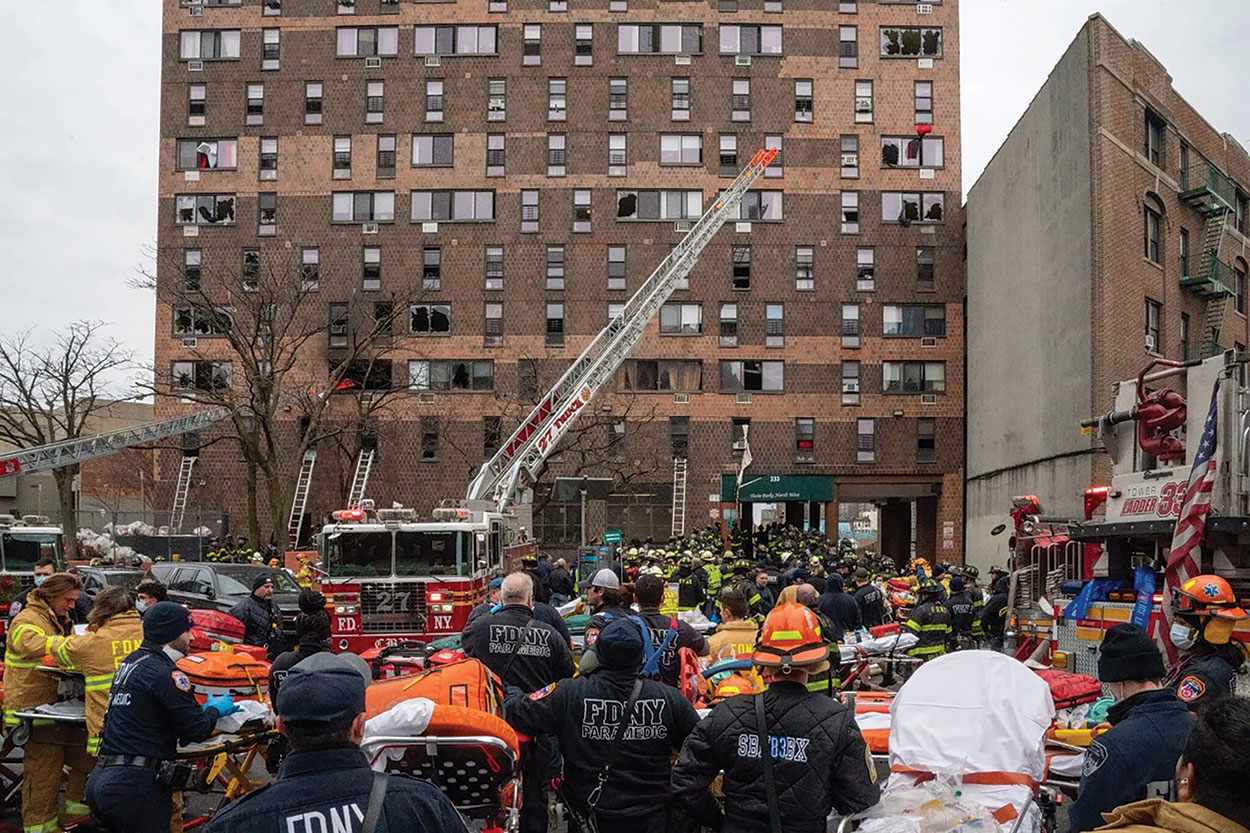Nineteen people, including nine children, were killed on Sunday when an apartment fire started by a malfunctioning space heater sent smoke billowing through a Bronx high-rise, officials said, in the deadliest fire New York City had seen in more than three decades. The New York Times, Jan. 9, 2022.
Fire in Bronx Apartment Building Kills At Least 19 – The New York Times (nytimes.com)
Several things went wrong on Sunday. The first item being an electric space heater that was not functioning according to the requirements of the UL testing standard. All electric space heaters are currently required to have overtemperature protection. If the heater gets hotter than it is designed for, such as when it is covered by blankets, or too close to surfaces, it is required to turn off. Listed heaters will also have tip-over sensors that will turn the unit off if it is not setting upright. Both of these mechanisms are designed to prevent the heater from causing a fire.
Manufacturer’s requirements go further by requiring that the heater be placed on a level surface, away from any combustible material or water. Space heaters should never be left unattended. Special care must be observed when heaters are used around children or pets. Never use extension cords or power strips to plug in heaters. Make sure to read the manufacturer’s instructions for any heater used, as they may have other restriction.
The National Electrical Code (NEC) contains information in Article 424 for Fixed Electric Space Heating. But the portable units are only covered loosely in Article 422 entitled Appliances. The main requirement, 422.6, is that all appliances supplied by 50 volts or higher shall be listed by a nationally recognized testing laboratory (NRTL).
The ampacity of the circuit that the appliance is plugged into must also be rated at a minimum of 125% of the rating of the appliance. See Section 422.10. But a permit and inspection are generally not required to plug in an appliance, so this requirement is difficult to catch and enforce in this situation.
The second thing that went wrong, when the occupants of the apartment where the fire originated ran out, they left the door to their unit open. This allowed the smoke to spread throughout the entire building. While the fire was confined to only the area of that apartment, the smoke restricted exit access for everyone in the building. The deaths were caused primarily by smoke inhalation. If the (fire) door on the apartment had closed, the effects of the fire would have been minimal.
Third, the fire sprinkler system and alarms had not been tested. Many of the unit alarms had been disabled, as there were frequent nuisance alarms in the building. The investigation is still pending, but it currently does not appear that the sprinkler system went off.
Takeaways
- Always use NRTL listed space heaters per manufacturer’s instructions
- Always leave fire doors closed.
- Never disable fire alarms, and test periodically, per manufacturer’s recommendations.















Find Us on Socials